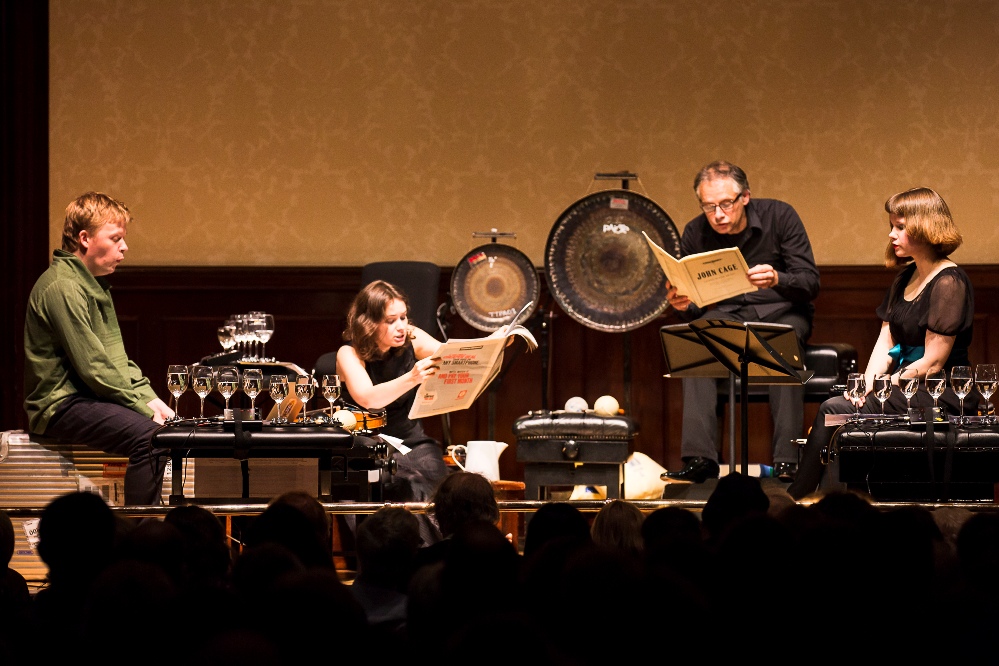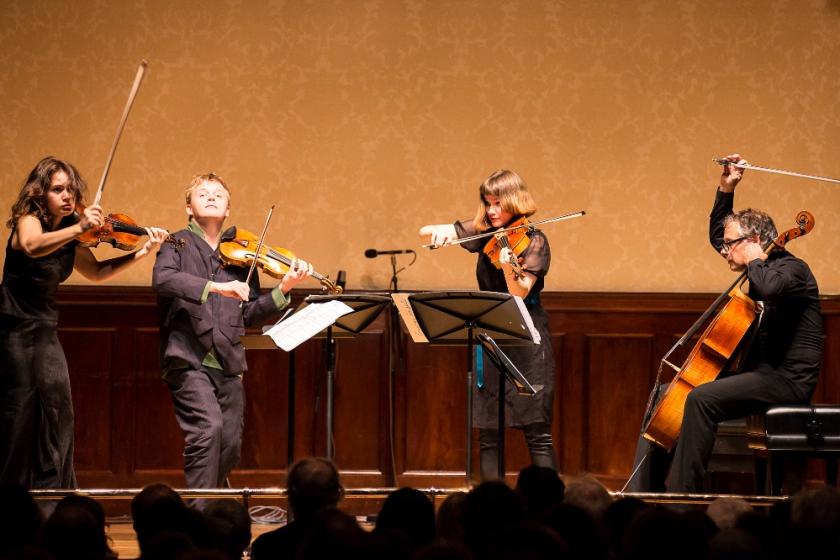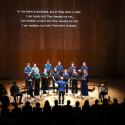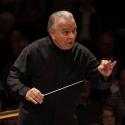Musical theatre needn’t be dominated by the human voice. Instrumental dramas with an element of acting can be a good way into the wonderful world of chamber music for younger audiences, and the Wigmore Hall’s new gambit of special student tickets for contemporary music paid off with the very different crowd there last night. It was rewarded with playing of the highest imaginative order from soloists in their own right: violinists Patricia Kopatchinskaja and Pekka Kuusisto, viola-player Lilli Maijala and cellist Pieter Wispelway. Yet though they got the musical dramas of early Beethoven and a George Crumb masterpiece exactly right, they needed a good theatre director to put the whole thing in order.
We might then have got a more energetic mode of listening from the three players not involved in the 20th century interludes between Biber’s crazy 1673 Battalia, Wispelway’s Britten and Maijala’s Ligeti; here the onlookers looked bored, though obviously they weren’t, and the segues back into the Ivesian battle music weren’t too confident. And much as I love and appreciate the Finnish deadpan humour of Kuusisto, as unique a player as his compatriot pianist Olli Mustonen, he managed to make the premise of the Musical Dice Game attributed to Mozart sound complicated (pictured below). It isn’t; a colleague explained it to me in 20 seconds in the interval. You simply throw two dice to select 16 bars out of 176, and the order you put them in will make up a perfect minuet tune. Just think of the picture dioramas you can make up by placing cards which will match up in any order, and you've got the gist.
 We could finally ease up, or rather sit forward in our seats and enjoy the unrelenting intensity, when the quartet finally embarked on Beethoven’s Op. 18 No. 4 Quartet, approached successfully via the earliest known piece of (11th century) instrumental polyphony. Beethoven's minor-key component of the early set of six, it sounded as radical as anything in his later years, especially in those jabbing double- or treble-stopped chords ricocheting between Kopatchinskaja and her three colleagues. Kuusisto ushered in the Andante scherzoso so quietly and strangely on the tail of the first movement that we didn’t at first know where we were metrically (3/8, it soon transpires; earlier, to pass the time before the Dice Game was ready, Kuusisto played us what he said was an old Finnish – Ostrobothnian – minuet, which came out in 4/4, a first for that dance, I’d have thought). There was never an idle moment here, though I did find the conscious absence of vibrato and Kopatchinskaja’s febrile lunges working against the grain of melody sometimes. Forget elegance: you can get that in other performances. This one was, like most of what quartet-lab does, sui generis.
We could finally ease up, or rather sit forward in our seats and enjoy the unrelenting intensity, when the quartet finally embarked on Beethoven’s Op. 18 No. 4 Quartet, approached successfully via the earliest known piece of (11th century) instrumental polyphony. Beethoven's minor-key component of the early set of six, it sounded as radical as anything in his later years, especially in those jabbing double- or treble-stopped chords ricocheting between Kopatchinskaja and her three colleagues. Kuusisto ushered in the Andante scherzoso so quietly and strangely on the tail of the first movement that we didn’t at first know where we were metrically (3/8, it soon transpires; earlier, to pass the time before the Dice Game was ready, Kuusisto played us what he said was an old Finnish – Ostrobothnian – minuet, which came out in 4/4, a first for that dance, I’d have thought). There was never an idle moment here, though I did find the conscious absence of vibrato and Kopatchinskaja’s febrile lunges working against the grain of melody sometimes. Forget elegance: you can get that in other performances. This one was, like most of what quartet-lab does, sui generis.
The Musical Dice Game’s connection with John Cage’s use of the i-ching cued an American second half. Cage’s Living Room Music of 1940 should be fun, exactly the sort of thing you can do at home. But here, as in the Biber and Mozart, a touch of self-consciousness shut the humour out, and the promised lounge on the bare, cold Wigmore stage didn’t materialize (though Kuusisto's eerie whistling of a simple tune, pictured below, was a pleasure).Dominic Murcott's Domestica for live harp and filmed household utensils, a similar premise, was much more lively at Sioned Williams' recital of premieres a week ago.
 Other audience members relished more than I did the attempt to work against the grain of this genteel establishment, which always wins in my experience. And as it doesn’t have a lighting rig, nothing could be done visually to set the scene for the “Dark Land” imagined so singularly, and sometimes terrifyingly, by one of the 20th century’s great mavericks, George Crumb, just approaching his 85th birthday – he was here for the magnificent Barbican celebrations five years ago – and 40 when he wrote Black Angels.
Other audience members relished more than I did the attempt to work against the grain of this genteel establishment, which always wins in my experience. And as it doesn’t have a lighting rig, nothing could be done visually to set the scene for the “Dark Land” imagined so singularly, and sometimes terrifyingly, by one of the 20th century’s great mavericks, George Crumb, just approaching his 85th birthday – he was here for the magnificent Barbican celebrations five years ago – and 40 when he wrote Black Angels.
It was, I admit, the piece I came for, reluctantly abandoning Elina Garanča at the Barbican for the chance to hear this metaphysical drama live. And quartet-lab did every aspect of its 13 fluent sections justice, raising the star quota here from three to four. There were the juddering “electric insects”, the bewitching sound of Wispelway’s cello at the top of the register against bowed musical glasses, and above all Kuusisto’s distant voice at the top of the harmonic line in the quotation from Schubert’s “Death and the Maiden” which retreats still further to become the ghost of Dowland’s “Lachrymae”. Full credit due - and not given in the programme - to consummate sound engineer Teemu Korpipää. As with all the Crumb chamber music I’ve heard, this is no parade of gimmicky gestures but a haunting whole. No wonder the younger members of the audience rose to their feet instantly, as I’ve seen them do for Schnittke symphonies over at the Royal Festival Hall: they know a work of genius, and a great performance of it, when they hear one.














Add comment